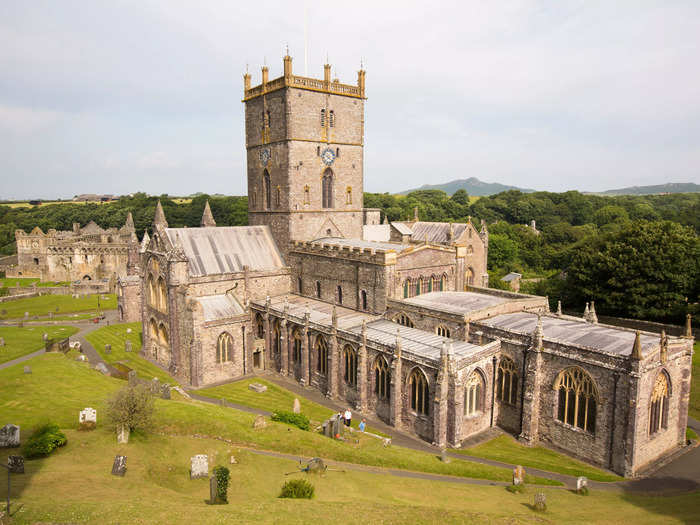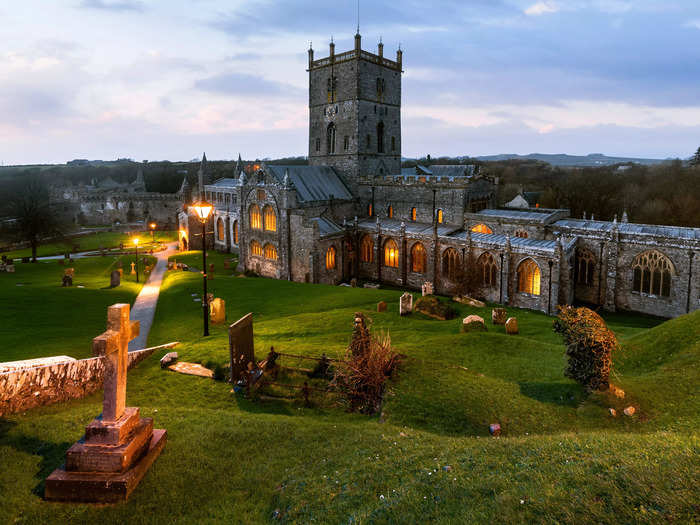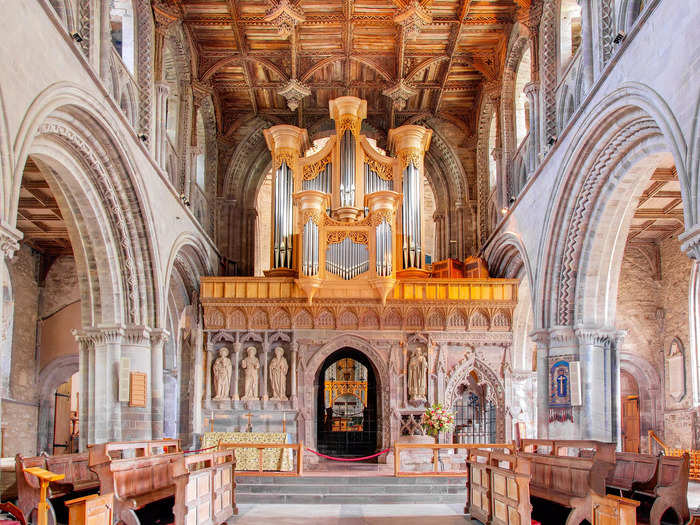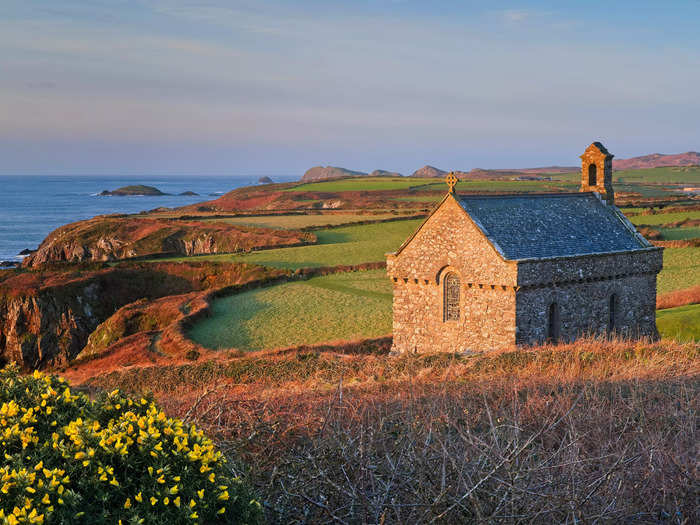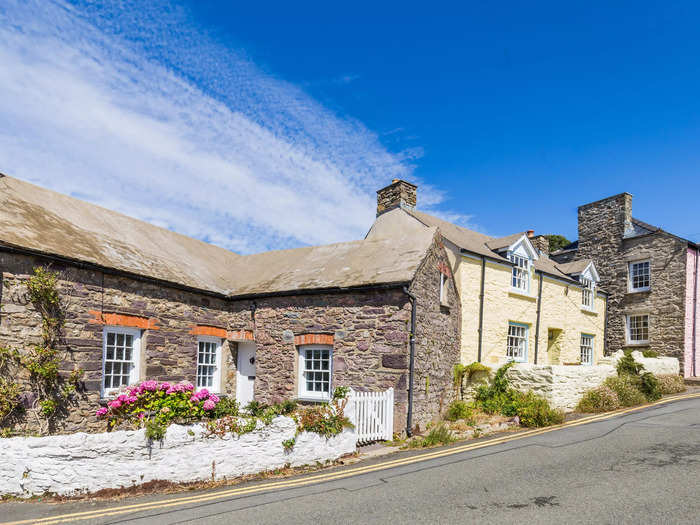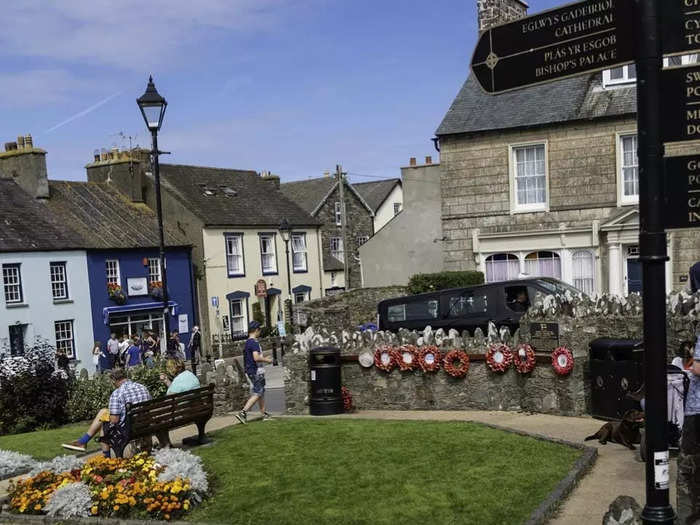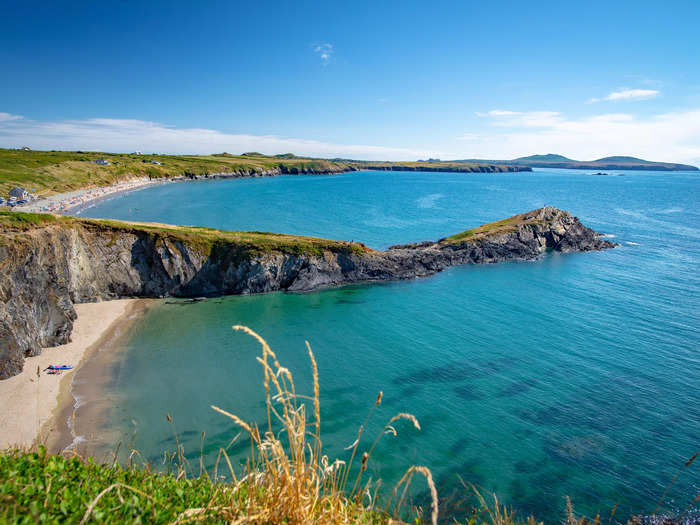View towards St Davids.Ffoto Keith Morris Aber/Getty Images
- St Davids is a tiny cathedral city of about 1,600 people in southwest Wales.
- The idyllic city is named after the patron saint of Wales, Saint David.
The city of St Davids in Pembrokeshire, southwest Wales, has been a Christian pilgrimage site since medieval times.
These days, its also famous for its title as Britain's smallest city.
With a population of around just 1,600 people, Queen Elizabeth II reaffirmed St Davids' city status in 1994, recognizing its "important Christian heritage," after it had lost it in 1886.
St David died on 1 March – St David's Day - in 589 and is bureid in the little city's cathedral.
Miracles ascribed to St. David, including the resurrection of a dead child and the restoration of sight to a blind man.
One of the more famous miracles associated with him is the formation of a hill beneath him as he preached to a large crowd, allowing them to see and hear him more clearly. During this episode, a white dove is said to have landed on his shoulder, and St. David is often so depicted.
The tiny city offers an idyllic spot for tourists to soak in both the area's historical significance and the magnificent coastal scenery.
From quaint cottages and cozy pubs to the iconic St Davids Cathedral, here's a look around Britain's tiniest city.
The star of the city is St Davids Cathedral. The current structure was built from 1180 to 1182 on the site of a 6th-century monastery founded by the patron saint of Wales, Saint David.
Ashley Cooper/Getty Images
It has been an important Christian pilgrimage site for over 800 years and is the tiny city's heart and soul.
joe daniel price/Getty Images
The cathedral's website says that 300,000 people from around the world make the journey to the church every year.
moorhen/Getty Images
The city is named after Saint David. According to legend, Saint David was born on a Pembrokeshire cliff during a storm. The location is now marked by the ruins of St Non's Chapel and a holy well, offering tourists another scenic spot to visit.
A modern chapel built near the ruins of St Non's Chapel birdsonline/Getty Images
The city is filled with quaint, pastel-colored cottages, local markets, cozy pubs, and galleries.
HildaWeges/Getty Images
The characterful city has several protected sites, including the Bishop's Palace and St Non's Chapel. These are part of the Welsh government's historic environment service, which aims to protect and preserve historic sites throughout the country.
© Hawlfraint y Goron / Crown Copyright
Visitors can also take advantage of the dramatic Pembrokeshire coastline and coastal paths, which offer stunning views out to sea.
Daniel Gauthier/Getty Images
The Pembrokeshire Coast Path offers visitors a beautiful 186-mile walk "across some of the most varied coastal scenery in Britain." It runs from St Dogmaels on the north coast of Pembrokeshire to Amroth in the south.
Michael Roberts/Getty Images

